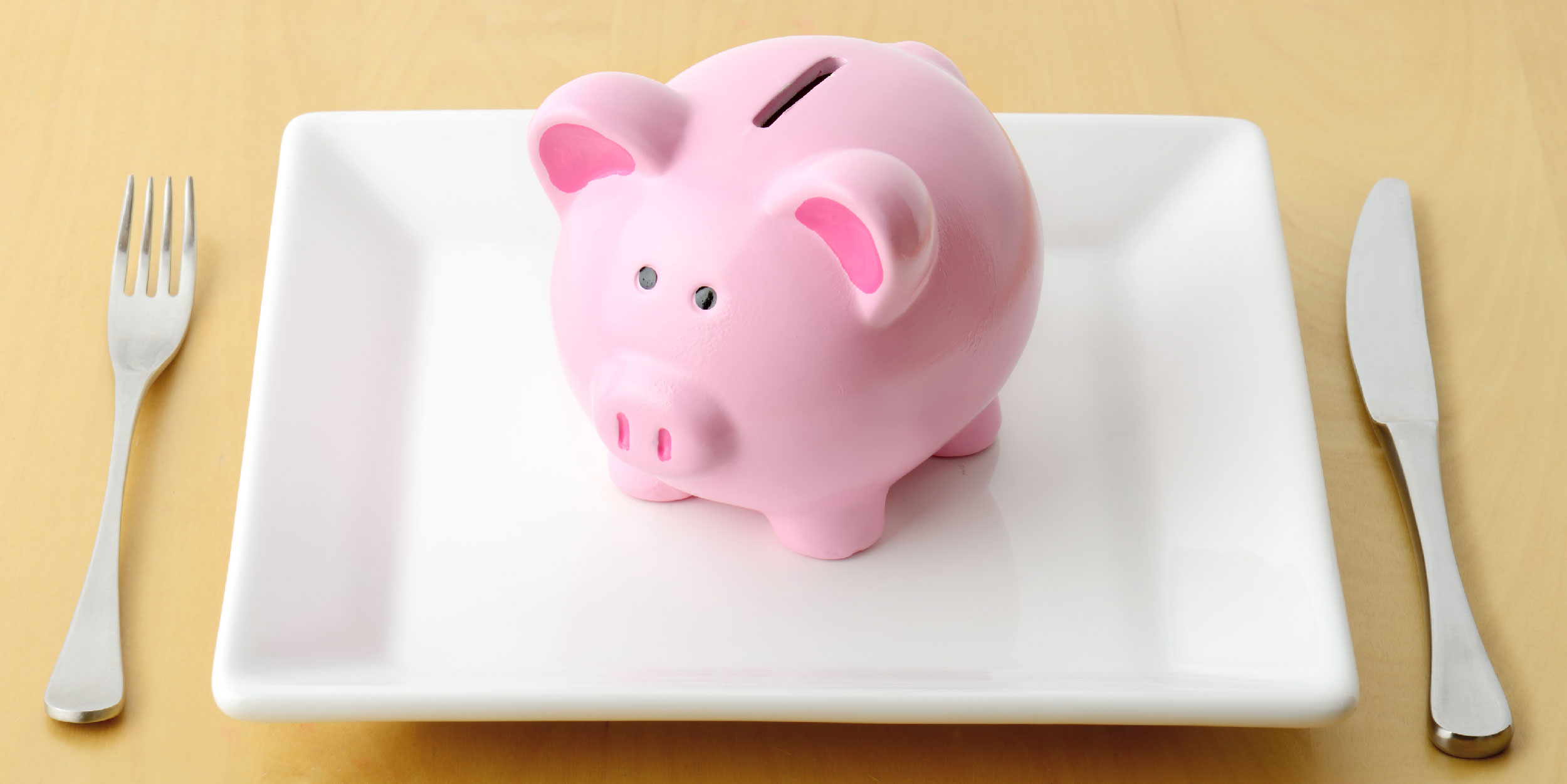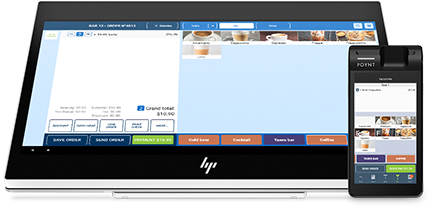
7 Restaurant Hacks to Streamline Operations and Save Money6 min read
The number of restaurant locations across the U.S. exceeded one million in 2018, according to the National Restaurant Association. Americans are currently spending 48 percent of their food budget on eating out and while the number is great, the intense competition makes it impossible for many smaller or newly-established venues to thrive.
Providing a quality service, a focus on marketing, staff training and the adoption of new technologies are all important for sustainable growth, streamlined operations and ultimately – financial gains.
Over 80 percent of restaurant owners are turning to technology in an attempt to streamline operations and offer customers better services. POS and electronic register systems, online ordering solutions, mobile payment processing, inventory apps and even predictive ordering technologies are changing the industry landscape.
If you’re considering options for streamlining operations and saving money, you’ll have a lot to explore. There are numerous tech solutions and clever hacks you can implement right now to boost transparency and accountability, automate some processes and streamline overall operations.
1. Introduce Digital Menus
A tabletop tablet is all you need to introduce a digital menu, ensure flexibility and give customers more control over the ordering process.

Digital menus look appealing, increasing the order volumes. These also give front of house staff more time to handle pressing issues while customers are choosing dishes and submitting orders on their own.
The introduction of tabletop digital menus results in added benefits. Such solutions enable restauranteurs to collect feedback about the needs and preferences of their clients. After restaurant visitors have had their meal, they could be asked to fill out a short survey and give an overview of the experience.
2. Utilize Kitchen Checklists
Preventing waste in the kitchen is a primary goal for all restauranteurs. Kitchen checklists can be used to reduce the risk of purchasing too much, purchasing the wrong products and throwing perishables in the bin.
Here are the various ways in which kitchen checklists can come in handy:
- Kitchen prep checklists track inventory, most popular items and quantities that will need to be purchased
- Kitchen inspection checklists highlight safety and productivity procedures staff should adhere to
- The creation of recipe costing cards shows how much each item on the menu costs to prepare and what the best pricing policy is going to be
A good food cost formula is based on the following criteria:
- Opening inventory value
- Cost of purchases
- Closing inventory value
- Food sales revenue
The formula that calculates food cost on the basis of these factors is:

Opening Inventory Value + Cost of Purchases – Closing Inventory Value = Usage Amount
Usage Amount/Food Sales Revenue = Cost of Food Sold
If you’re using the right inventory management system, these checklists and cards can be created within the program itself to keep track of availability and the need for additional purchases.
3. Focus Your Monitoring Efforts on High-Cost Ingredients
Inventory and output monitoring are important across the board but these are even more crucial when it comes to high-cost ingredients. These are the supplies you definitely do not want to have ending in the bin.
Effective monitoring could consist of several key techniques:
- Ensure you have a real-time inventory tracking solution
- Track food prices regularly to find out whether switching suppliers could help you save some money
- Train kitchen staff to handle high-cost ingredients economically and without waste
- Use staff monitoring to prevent wasteful practices (for example – the over-pouring of expensive drinks could contribute to serious financial losses in the long run)
- Reduce the risk of food getting returned
- Always do portion size control
4. Ensure Effective Restaurant Communication
Even if you hire the best professionals, there’s still a risk of doing a mediocre job in the absence of effective communication.
Front of house employees should provide the kitchen team with client requirements and data required to fulfill orders in the best possible way. Additionally, different kitchen stations should also be communicating effectively to ensure perfect synchronization.
A POS system is one of the essentials required to get everyone on the same page. On top of that, old-fashioned conversations should be used to communicate customer expectations and translate these into the right menu items, pricing policies or ambiance changes.
Sometimes, it’s easier to have wait staff communicate directly with the kitchen team, especially when speed and optimal execution are being pursued.
5. Track Finances and Cash Flow
There are several key things you’ll need to do in order to keep track of cash flow and expenses:

- Maintain a cash flow statement
- Use a single, reliable source to track expenses
- Manage accounts on a daily basis to ensure accuracy
- Enforce payment deadlines
- Use past information to prepare for the known expenses and do some budgeting
- Control food costs
Accounting software is readily available and simple to use. Once you input all of the essential data, you’ll be provided with detailed reports that create forecasts and adequate predictions for future expenses.
Good accounting software solutions are easy to integrate with other tech products you’re relying on (such as payroll processing or inventory software). Through the employment of such tech solutions, you’ll get a comprehensive overview of restaurant operations and finances, as well as the ways to streamline those.
6. Work on Streamlined Supplier Relationships
One of the most important relationships is the one between your restaurant and suppliers. You depend on suppliers for consistency, the provision of quality products and supplies, timely delivery and cost-efficiency.
Real-time inventory management is the key to placing adequate orders, coordinating delivery times and making sure that mistakes aren’t taking place.

Some additional techniques you can employ to streamline the relationship with suppliers include:
- Communicate your needs and your schedule in a timely manner
- Make timely payments to maintain trust and respect in the relationship
- Whenever miscommunication happens, address it in the fastest way possible
- Use digital apps and software to track inventory management
- Periodically, evaluate your orders to make sure you really need everything that you’re buying
7. Give Floorplan Mapping a Try
A modern POS or a management terminal that has the right capabilities will enable you to monitor the entire restaurant quickly and efficiently.
These tech solutions give you a good idea about how busy the restaurant is, whether wait staff in one section is struggling and if you need to do something in order to speed up service and give clients better quality. Through digital floorplan mapping, you will have a real-time idea about how the front of house team is doing and whether you need to modify the floorplan in order to give these team members a minute to breathe.
Most innovative technologies allow for real-time monitoring, giving you a centralized view of current processes and whether these are delivering the anticipated results.
Streamlining operations depends on several essentials. Having the right technology is crucial but you also have to make sure staff members are trained to make the most of it. An emphasis on communication and on sustainable ordering/food management practices can also reduce waste, eliminate mistakes and save your restaurant a lot of money.
There isn’t a one-size-fits-all solution for restaurant industry representatives. Take some time to assess your most pressing needs and the ways in which you’re missing the mark. These are the issues you have to address in order to ensure effective operations.



